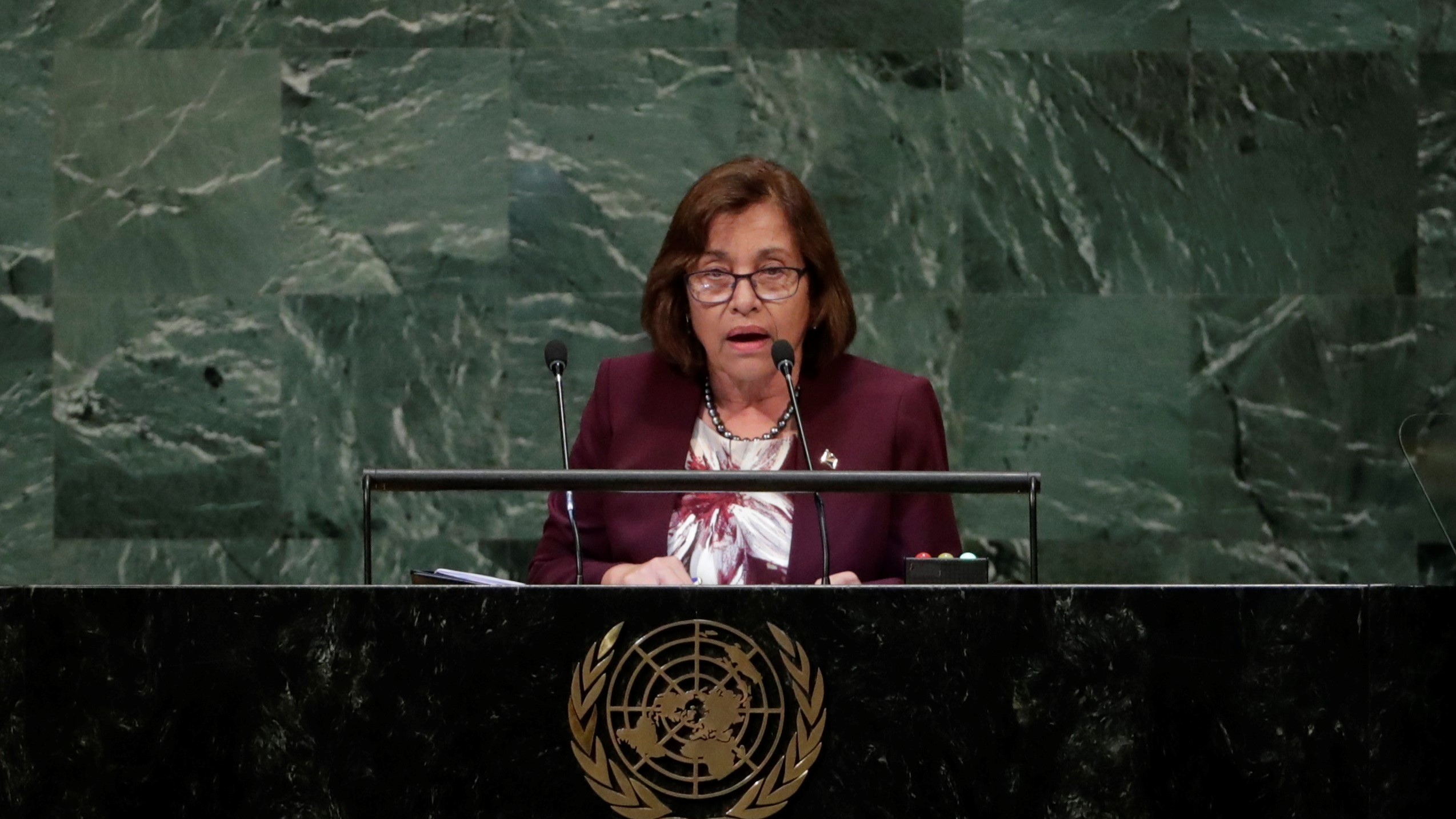A tiny Pacific island nation is about to issue its own cryptocurrency

The Republic of the Marshall Islands is pressing forward with a controversial plan to issue its own cryptocurrency, which it says will be legal tender along with the US dollar.
The news: Despite significant skepticism about the plan, the government still plans to issue the currency, called the Marshallese sovereign (SOV for short), according to a new essay in CoinDesk by David Paul, a top advisor to President Hilda Heine (pictured above). This follows an announcement by the government in June that it had established a nonprofit, called the SOV Development Fund, to maintain the digital currency system.
First-mover status: Governments across the world are wrestling with whether they should issue sovereign currency in digital form. Venezuela has already tried to launch one, the petro, but it hasn’t gotten off the ground. Officials in the Marshall Islands government apparently think they can launch the first one that works.
Two birds with one stone? In March 2018, when the Marshall Islands legislature passed a law that launched the digital currency project, it saw an opportunity to raise much-needed revenue. That was back in the halcyon days of the initial coin offering bonanza, and companies were regularly generating hundreds of millions of dollars simply by creating their own digital money.
But Paul and other proponents also saw something else: a way to become more connected to the global financial system. Paul told Bloomberg in December that a crackdown on money laundering by the US in recent years has raised the cost of compliance and made it less profitable and more risky for international banks to work with nations like the Marshall Islands. “By issuing a currency ... that can travel the globe instantly, and that is tamper-proof and completely secure, the Marshall Islands will finally be connected to the global financial system on its own terms,” Paul writes in the new essay. That’s true in at least one sense, since users wouldn’t need a bank to send money overseas (though the recipient would need a way to convert it into a currency that could be used on the other end).
Political headwinds: President Heine’s domestic political opponents used the issue to force a vote of no confidence in November 2018, which she narrowly won. Backlash has also come from abroad. The US Treasury Department has said it has “serious concerns” about the plan. In a September report, the International Monetary Fund warned that the potential revenue gains from issuing the digital currency could be outweighed by the costs due to economic, “reputational,” and money-laundering risks.
Many details TBA: According to Paul, though, the platform will make it cheaper to comply with anti-money-laundering regulations. Using a blockchain, “we can automate much of the compliance,” he writes. He also says the money supply will be “predetermined and tamper-proof,” so the government will not be able to manipulate it. Few other details are public, however. Paul is expected to share more at a conference next week in Singapore.
Keep up with the fast-moving and sometimes baffling world of cryptocurrencies and blockchains with our weekly newsletter Chain Letter. Subscribe here. It’s free!
Keep Reading
Most Popular
Large language models can do jaw-dropping things. But nobody knows exactly why.
And that's a problem. Figuring it out is one of the biggest scientific puzzles of our time and a crucial step towards controlling more powerful future models.
The problem with plug-in hybrids? Their drivers.
Plug-in hybrids are often sold as a transition to EVs, but new data from Europe shows we’re still underestimating the emissions they produce.
Google DeepMind’s new generative model makes Super Mario–like games from scratch
Genie learns how to control games by watching hours and hours of video. It could help train next-gen robots too.
How scientists traced a mysterious covid case back to six toilets
When wastewater surveillance turns into a hunt for a single infected individual, the ethics get tricky.
Stay connected
Get the latest updates from
MIT Technology Review
Discover special offers, top stories, upcoming events, and more.